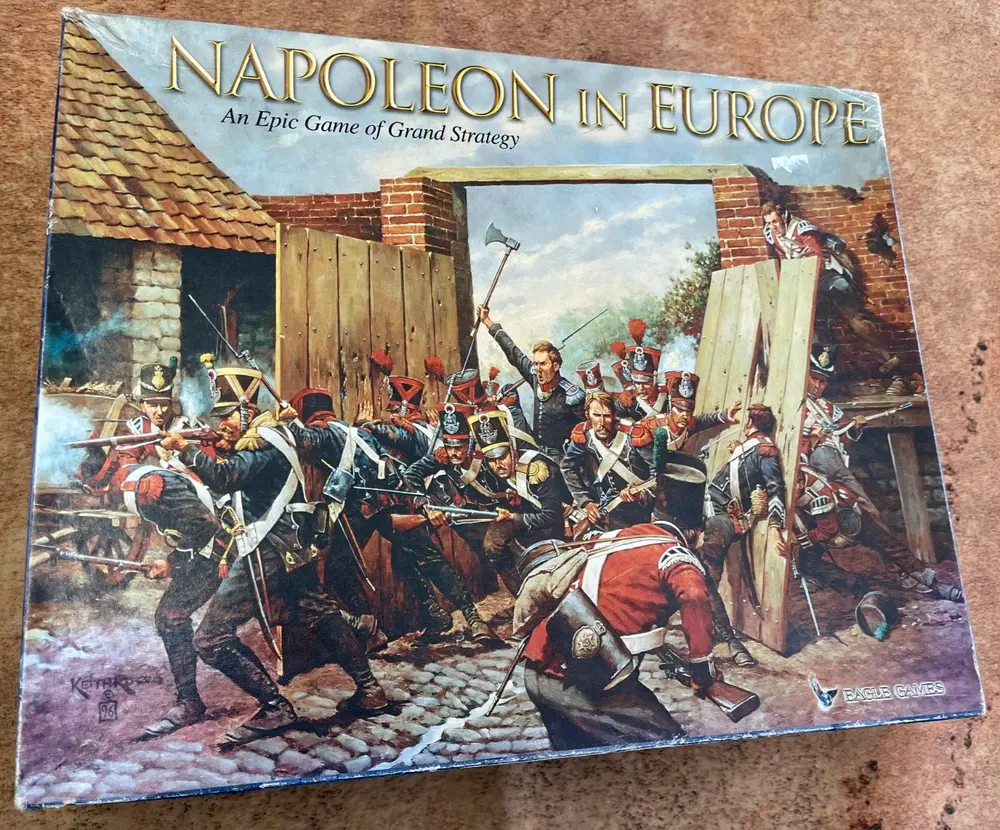Napoleon in Europe (2001)
Napoleon in Europe
“Napoleon in Europe” (abbreviated as NiE) is a board wargame produced by Eagle Games in 2001, which combines elements of economics, politics, and military strategy.
Game Components of Napoleon in Europe
How To Setup Napoleon in Europe
Setting up the game involves placing the large map board, distributing the miniatures and other components among the players, and determining the starting positions of each nation. The game includes seven major playable nations: France, Great Britain, Russia, Austria, Prussia, Spain, and the Ottoman Empire. Each nation has its specific color-coded miniatures and starting positions based on historical troop numbers.
Gameplay Mechanics and Game Objective
Player Experience
Playing **Napoleon in Europe** is a immersive experience that requires strategic thinking and resource management. The game offers multiple levels of play (Basic, Standard, and Advanced), allowing players to choose their level of complexity. Historical and a-historical game modes provide flexibility in gameplay, making it appealing to both history enthusiasts and casual gamers. The game can take over 360 minutes to play, making it a significant commitment but also a deeply rewarding one.
Pros
Cons
Personal Thoughts on Napoleon in Europe
**Napoleon in Europe** is a game designed for serious strategy enthusiasts and history buffs. It offers a rich and detailed experience that simulates the complexity of the Napoleonic Wars. While it may be daunting for new players due to its complexity and length, it is highly rewarding for those who enjoy grand strategy games. The game’s flexibility in gameplay modes and scenarios makes it suitable for both historical reenactments and creative storytelling. If you’re looking for a game that challenges you on multiple fronts and provides a deep historical context, **Napoleon in Europe** is an excellent choice.
We are supported by our audience. When you purchase through links on our site, we may earn an affiliate commission, at no extra cost for you. Learn more.

